As the heat of another hot day of the unpredictable Paraguayan winter subsides, groups of women and girls in long, multicoloured skirts emerge into the open spaces of the Maká Indigenous community known as Nueva Colonia, in the city of Mariano Roque Alonso, just outside the Paraguayan capital Asunción.
The characteristically bright garments of Maká women have long been a commonplace sight in Asunción, as they sell a variety of intricate craftworks to passers-by on busy streets and at the city’s bus station. However, over recent months—like so much else—Maká women have been noticeably missing from the capital.
“It’s been very difficult—we Maká haven’t been able to go anywhere for six months,” said community leader Mateo Martínez, as he sat outside Nueva Colonia’s community centre, his silver hair framing glasses and a facemask. “Our only income comes from selling our crafts.”
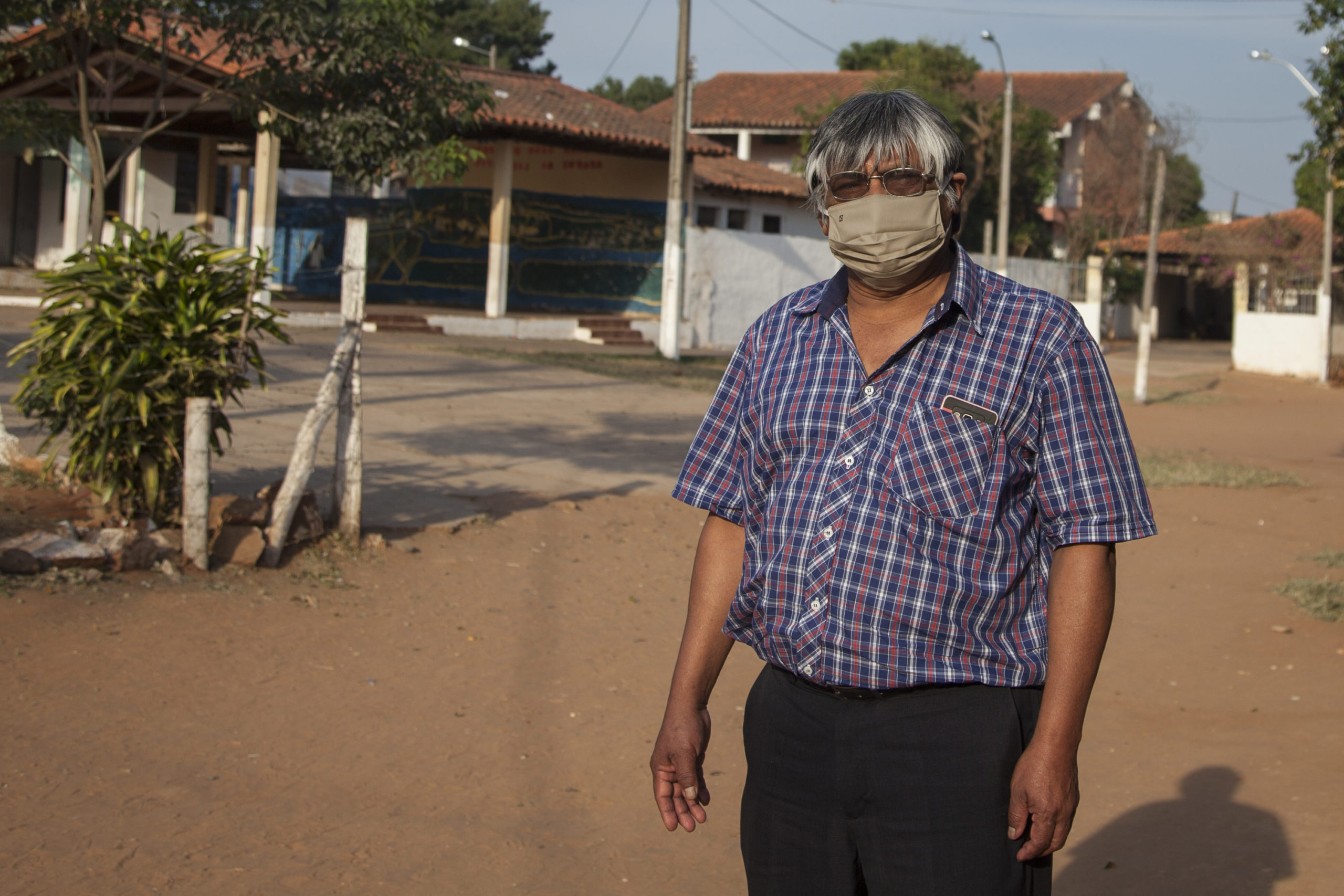
Most of the Maká’s main area of land, located opposite Asunción on the western bank of the River Paraguay, is illegally occupied, according to Martínez. More than half of the country’s roughly Indigenous 500 communities face landlessness or land-claim issues after seeing their territories illegally appropriated by both public and private concerns.
In March, the Paraguayan government began to implement strict measures to combat COVID-19 transmission after just the second confirmed case of the illness in the country. Soon after, a total lockdown was called, confining citizens to their homes for over two months. While this rapid reaction achieved some of the lowest levels of infection in Latin America for a time, the socioeconomic fallout has been enormous.
In a country where 65 per cent of the population lives day-to-day through informal employment outside the tax system, restrictions on movement have not been accompanied by support packages capable of meeting the needs of those forced to stop working. With police violence recorded towards people found on the streets during lockdown, many, including the Maká, had no choice but joblessness and scarcity.
Easing of official restrictions over recent months has allowed for gradual reactivation of certain sectors of the economy. As elsewhere, this has also coincided with an ongoing steep rise in numbers of COVID-19 cases. In this context of deterioration, members of vulnerable groups find that, on top of a lack of work, food and basic services, they now have the very real worry of being met with a greatly underequipped health public system if they get sick.
Communal efforts to provide food have been notable throughout the pandemic: hundreds of emergency communal kitchens run through mutual-aid and donations have appeared across Paraguay. However, these initiatives have only been able to go so far in guaranteeing wellbeing and fulfilment of rights. The 117,000 people that self-identify as members of one of 20 Indigenous nations in Paraguay represent around two per cent of the total population of 7 million. They are perhaps the most vulnerable of all due to a multitude of long-standing injustices that continue to deny them access to land and basic rights.
Hunger in the communities
Martínez said that lockdown and subsequent measures have produced a sudden, community-wide disappearance of income from craft sales that has greatly affected possibilities of guaranteeing access to food. He said the Maká in Mariano Roque Alonso are relying on a mixture of communal efforts to pool food costs alongside donations received from individuals and social organizations. Help from the state—including the Paraguayan Indigenous Institute (INDI), the body responsible for supporting the interests of Indigenous people—has been conspicuously absent.
“We’ve really noticed a low amount of support from the state. We’ve been brought food by the INDI just twice during this whole time,” said Martínez.
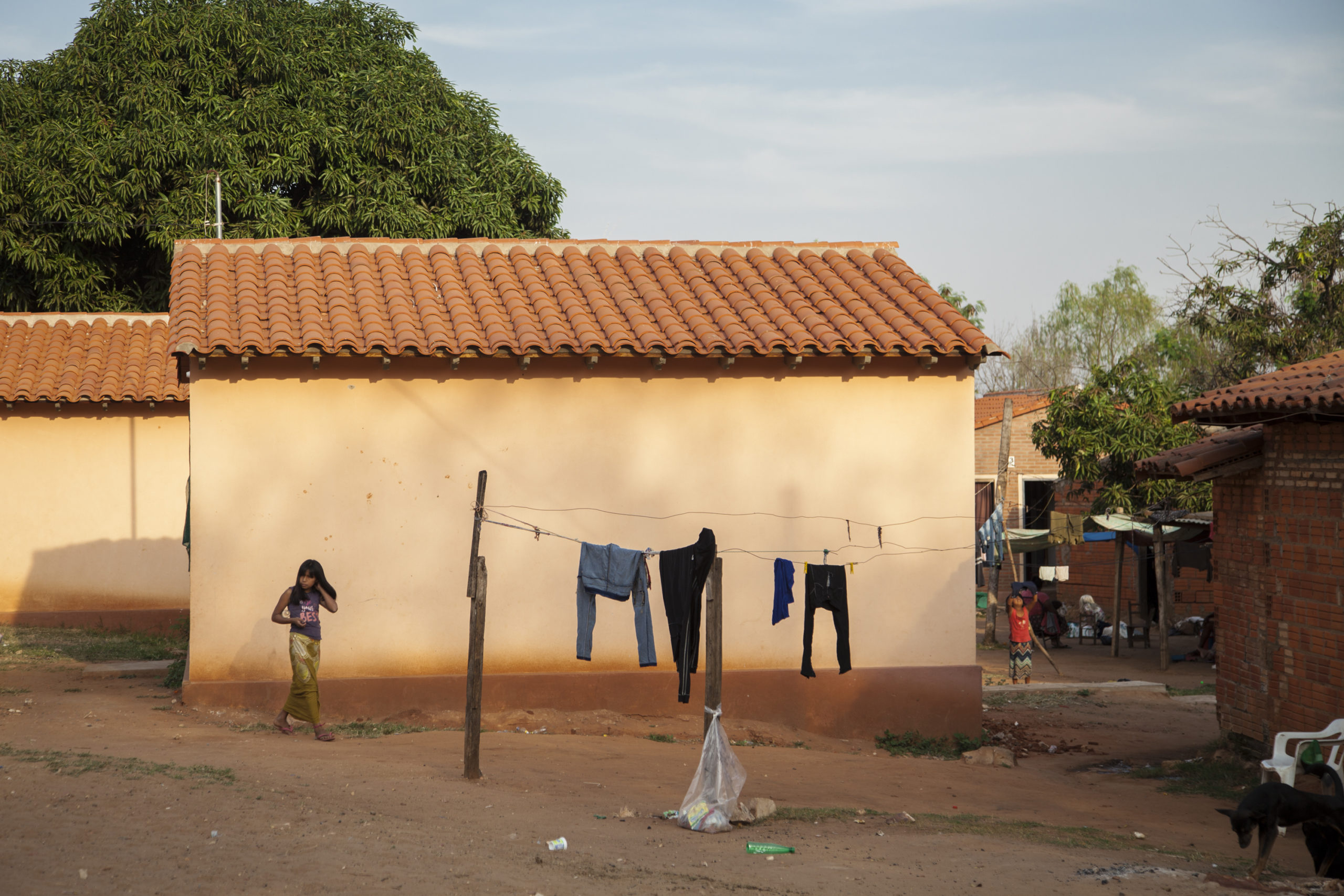
As elsewhere, not all social groups in Paraguayan society have faced the pandemic on the same terms. The Maká’s situation of economic instability, which is pinned on their near total reliance on informal craft sales, is not born of choice, but from deep-set systemic racism towards Indigenous people in Paraguay that blocks work opportunities.
“It’s as our ancestors always said: Indigenous people are still not paid in line with what non-Indigenous people earn—there’s enormous discrimination,” said Martínez.
A 2015 UN report found that 75 per cent of the Indigenous population of Paraguay lives in poverty. Disturbingly, 63 per cent of Indigenous children under-five face extreme poverty, more than twice the national average. Basic services such as electricity, roads and running water are lacking in many communities, with access to education and healthcare also extremely restricted. The gravity of this historical situation led the Paraguayan government to pass a law declaring the country’s Indigenous peoples in a state of emergency in June 2019.
“Indigenous communities have great difficulty in guaranteeing secure access to food and water – whether there’s a pandemic or not,” said Mirta Pereira, a lawyer of the Federation for the Self Determination of Indigenous Peoples (FAPI). “This situation has only worsened during the pandemic.”
Martínez said that, in the face of this situation, his community was fighting to broaden work opportunities to provide a better future for their young people. Education is key: two lawyers studied at Colonia Nueva’s schools. The Indigenous leader also spoke proudly of plans to implement an economic project on communally owned land recently recovered by the Maká after a decades-long battle against usurpers.
“We’re going to go there to do something productive. Our interest, and that of the new generation, is just that: to have something for our families,” he said.
Technological barriers
Martínez expressed frustration that, even given their urban setting and the short distance from Asunción to Colonia Nueva, “authorities never come to really see what needs we have—there are many needs.”
Much further afield from the capital in the region of Amambay, Sandra Arce, a teacher from the Paĩ Tavyterã people’s Ita Guasu community, said state help had been extremely scarce throughout the pandemic.
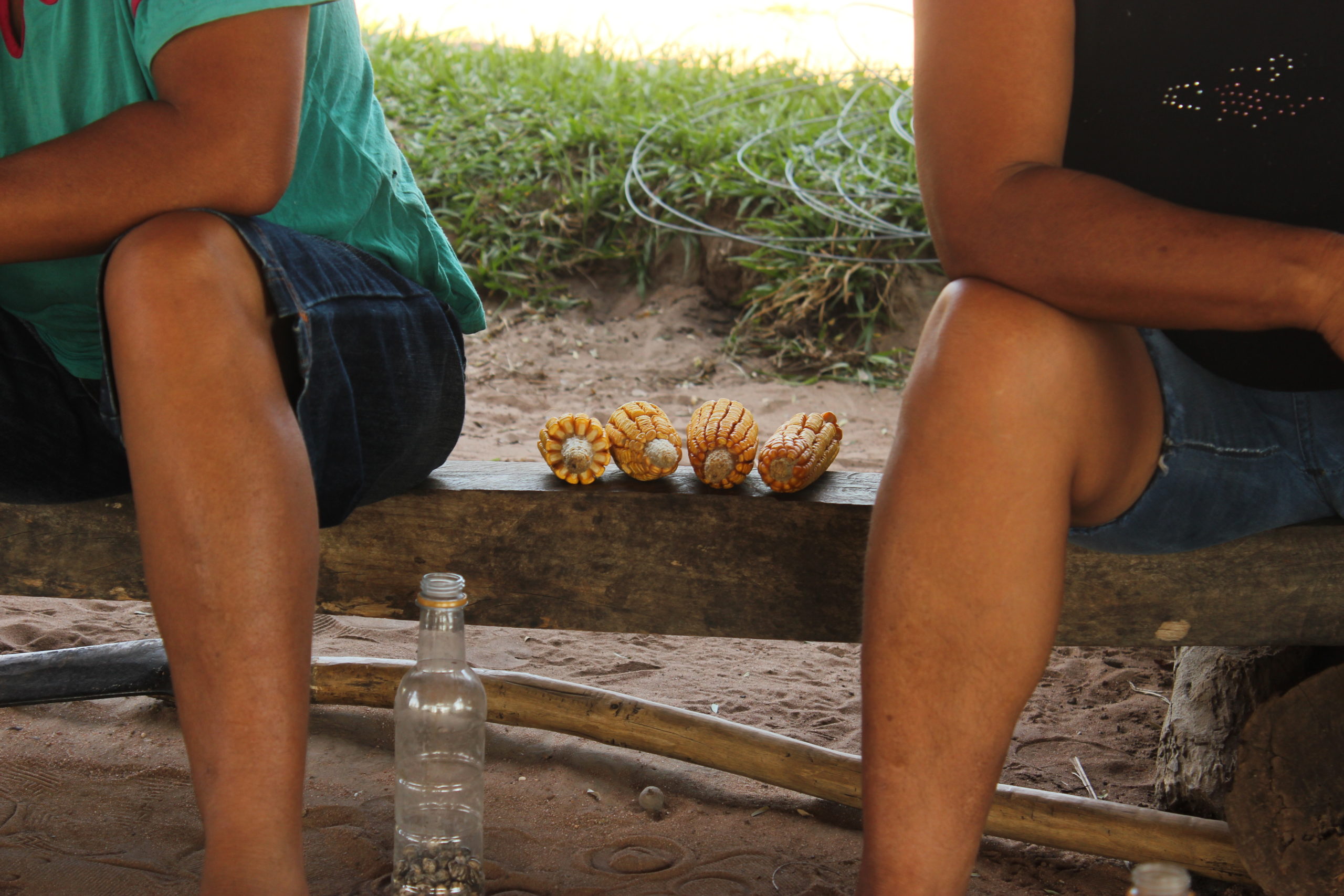
“The regional government hasn’t helped at all, nor has the mayor,” she said. “In May or June, we received some basic supplies from the INDI, but just once—that was it.”
Economic conditions worsened in Ita Guasu—a community located below an enormous rocky outcrop that gives it its name—as the main source of work as labourers in ranches in the surrounding area dried up. In addition, Arce said technological and economic hurdles stymied access to state programmes of small emergency payments for which community members were eligible. She said they received no assistance to register for these programs through an obligatory website or mobile application.
“We haven’t been able to receive the social support,” she said. “Some people don’t have smartphones to register on the system with or they don’t have credit. It’s difficult for us.”
Nevertheless, Arce said the Paĩ Tavyterã “are battling away on our own terms in the fields.” Well-developed agricultural practices have provided important relief from the pandemic’s impact, even if a great part of their seeds were lost in the fires that ravaged Paraguay and neighboring countries in 2019.
“We have animals and all kinds of plants: beans, maize, watermelon and vegetables too,” said Arce.
The lack of suitable land prevents many other communities from growing crops. Even communities that hold land, such Ita Guasu, face continual incursion and pressure from an ever-expanding agribusiness sector that contributes to Paraguay having the most unequal distribution of land ownership in the world, according to a World Bank report.
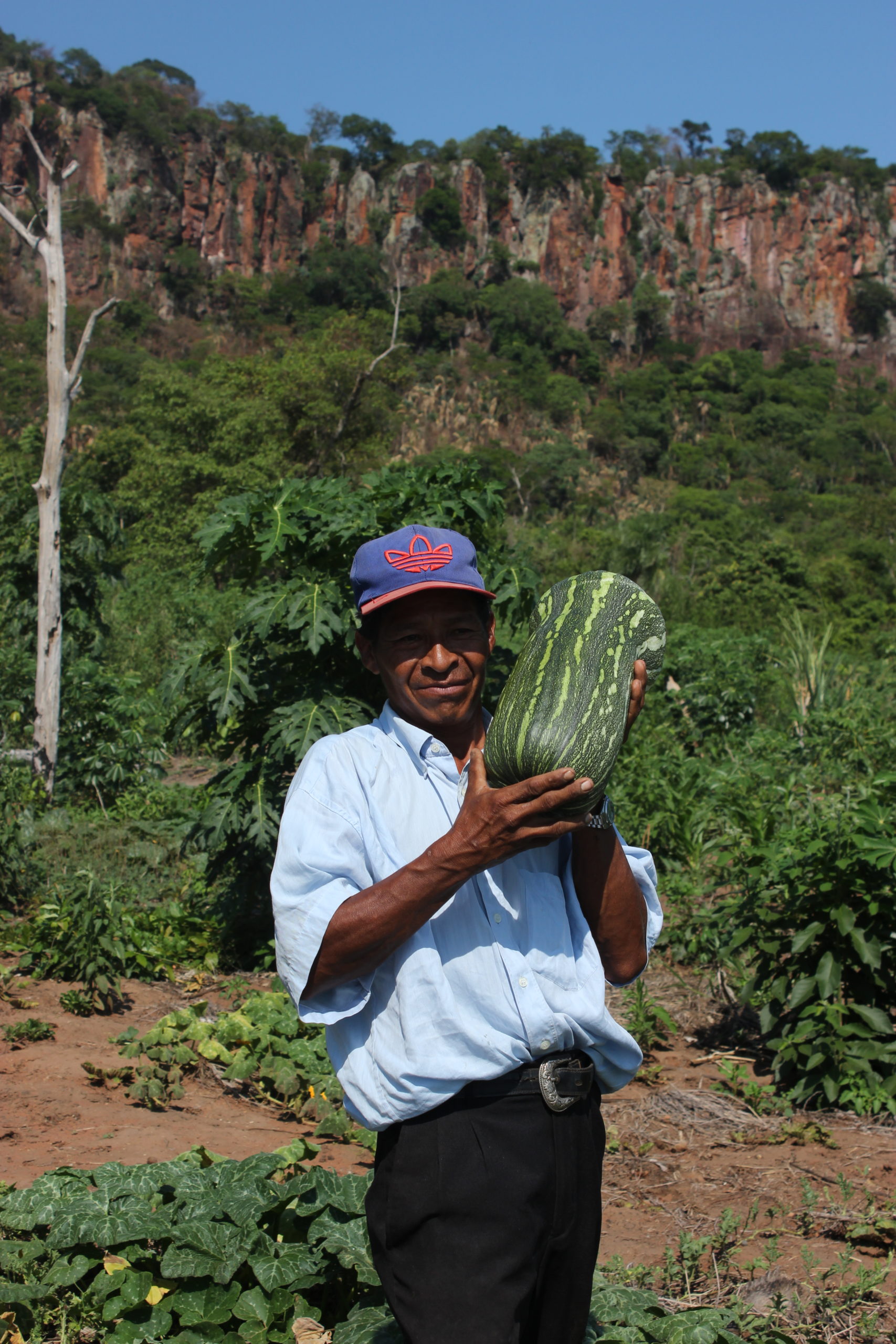
The Paĩ Tavyterã must also face the pandemic from the extremely violent context of Amambay, by far Paraguay’s most violent region. Official figures show Amambay recorded 70 murders per 100,000 inhabitants in 2018, almost five times higher than the region with the second-highest figures.
Brazilian organized crime gangs such as Primeiro Comando da Capital operate in the region, which shares a border with Brazil. Additionally, the Paraguayan People’s Army (EPP), a Marxist guerrilla movement designated as a criminal organization by the state, are present in the few remaining forested areas of Amambay. The Paĩ Tavyterã’s rural communities are vulnerable to violence from both the EPP and the Joint Task Force (FTC)—a Paraguayan military unit formed in 2013 to tackle the EPP. The FTC has been linked to numerous human rights violations in civilian communities according to the Paraguay NGO Peace and Justice Service (Serpaj).
On 9 September, this violence context was made extremely visible as Adelio Mendoza, a Paĩ Tavyterã man and resident of Ita Guasu, was kidnapped alongside his boss Óscar Denis, the former vice-president of Paraguay and large landowner, by the EPP.
Mendoza was released on 14 September. A military spokesperson stated that “pressure” from the FTC had led to Mendoza being freed. However, the liberation came shortly after several incursions by unarmed Paĩ Tavyterã groups—formed principally by women—into forested areas to search for the kidnapped men. Local media said these expeditions were key for Mendoza’s freedom.
No plan, no funds
“Each community is trying to look after themselves in their own way,” said Pereira, the lawyer with FAPI. “Unfortunately, the state has only implemented one-off, palliative responses and has no strategic plan to cover the needs and expectations of Indigenous peoples.”
A recent open letter from eight key Paraguayan social organizations, including FAPI, underscored that Indigenous peoples are now living a “double emergency” because of the pandemic, following the official state of emergency declared for Indigenous people in 2019.
Beyond the lack of a coherent response to the current situation, the letter points to the historical underfunding of the INDI as a sign of the state’s negligence towards Indigenous peoples. Even with its small annual budget, the institution is accused of inefficiency and has only managed to spend approximately half of available funds.
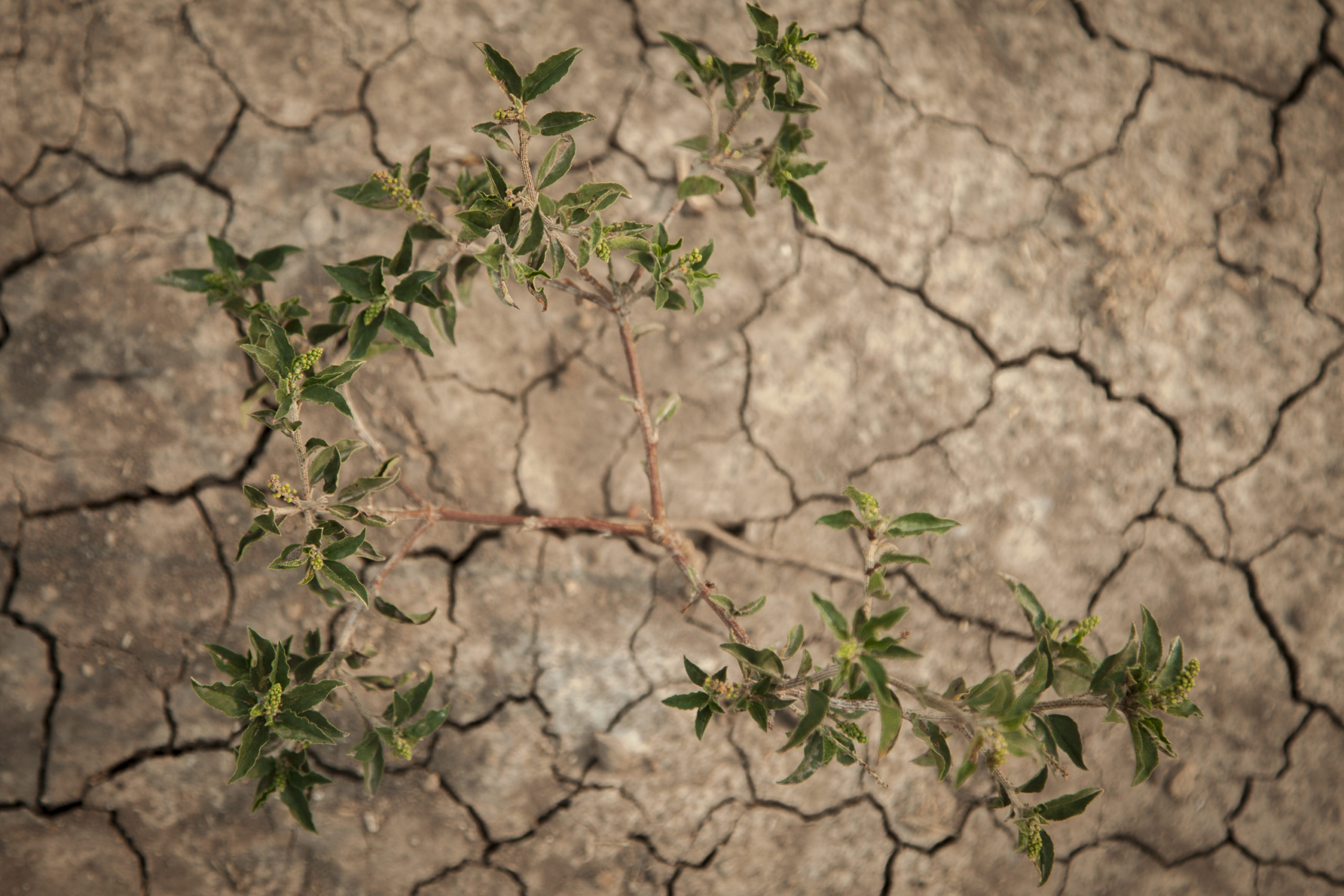
Edgar Olmedo, president of the INDI, claimed that no emergency funds were received by his institution to deal with the pandemic. However, public records show that, as part of the state’s $1.6 billion pandemic response package, the institution was allocated $310,000 of which, to date, $14,000 has been spent on “travel expenses.”
Given the many corruption scandals that have tainted the government’s handling of the pandemic, alongside a long history of notorious cases of corruption within the INDI, this revelation is cause for concern. Paraguay is ranked 12 of 15 Latin American countries in the AS/COA Capacity to Combat Corruption Index.
The INDI did not respond to multiple requests for comment.
At the end of August, the Paraguayan Congress approved a law that will see the state provide $5 million support to the ollas populares: emergency communal soup kitchens that have appeared all over the country in recent months, feeding many thousands of families as local communities look to mediate the impact of the pandemic though mutual aid, solidarity and donations. Opposition Senator Esperanza Martínez wrote that this new funding was necessary given the low reach and logistical issues of the government’s own assistance programs.
Of these funds, $1.4 million will be allocated to the INDI. While the money has potential to provide some relief, it will be fleeting—there will only be roughly $12 allocated per Indigenous person.
Sacks of rice are not enough
Access to food is far from the only long-term issue afflicting Paraguay’s Indigenous communities, which have been brought to the fore because of the COVID-19 pandemic.
Edelmira Martínez, head of the school in the Yshyr Ybytoso people’s community of Puerto Diana in the extremely remote Chaco region of Alto Paraguay, told Toward Freedom that the economic and technological barriers faced by many Indigenous people had not been considered within a state programme of virtual school classes—or even for the delivery of pedagogical materials through Whatsapp—as schools are set to remain closed until December 2020.
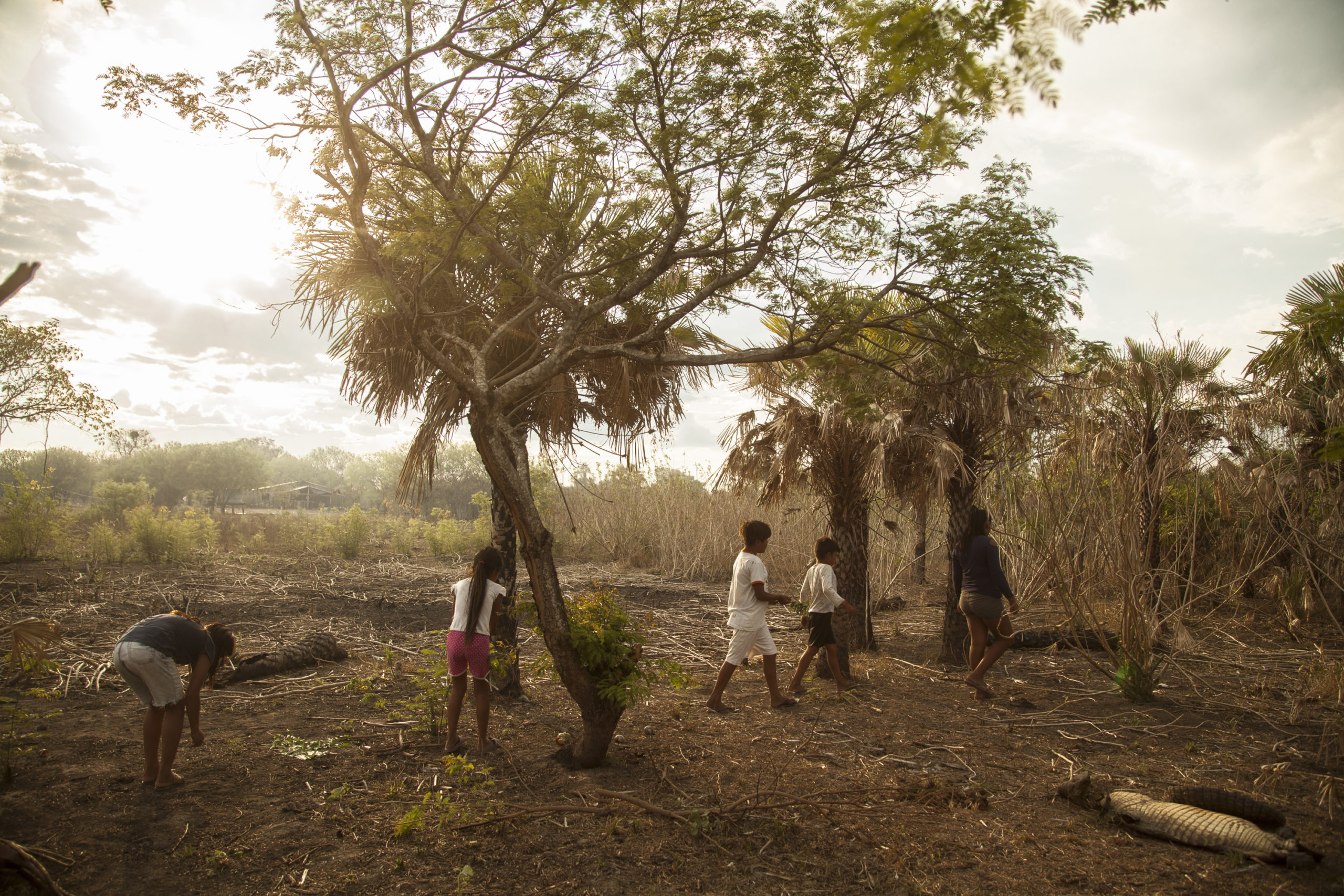
“The Ministry of Education announced that parents and children had to use the online virtual platform,” she said. “There are only three or four pupils here that have access to mobile phones suitable for this—the rest don’t have anything.”
School teachers are putting in enormous efforts to hand deliver print materials to students. However, Martínez emphasized that no financial support for this initiative was received. “Ink is expensive, paper is expensive. We can’t ask the parents to buy it—we are Indigenous and don’t have funds.”
The precarious situation builds upon pre-existing educational inequalities. The 2015 UN report states that, while children complete an average of eight years of school in Paraguay, Indigenous children on average leave education after three. In addition, the report estimates 40 per cent of Indigenous people cannot read, in comparison to 5.1 per cent of the general population.
Beyond the harmful educational impact of the pandemic, the Yshyr Ybytoso face fierce environmental problems that are far from being of their making, and further worsen conditions during the pandemic.
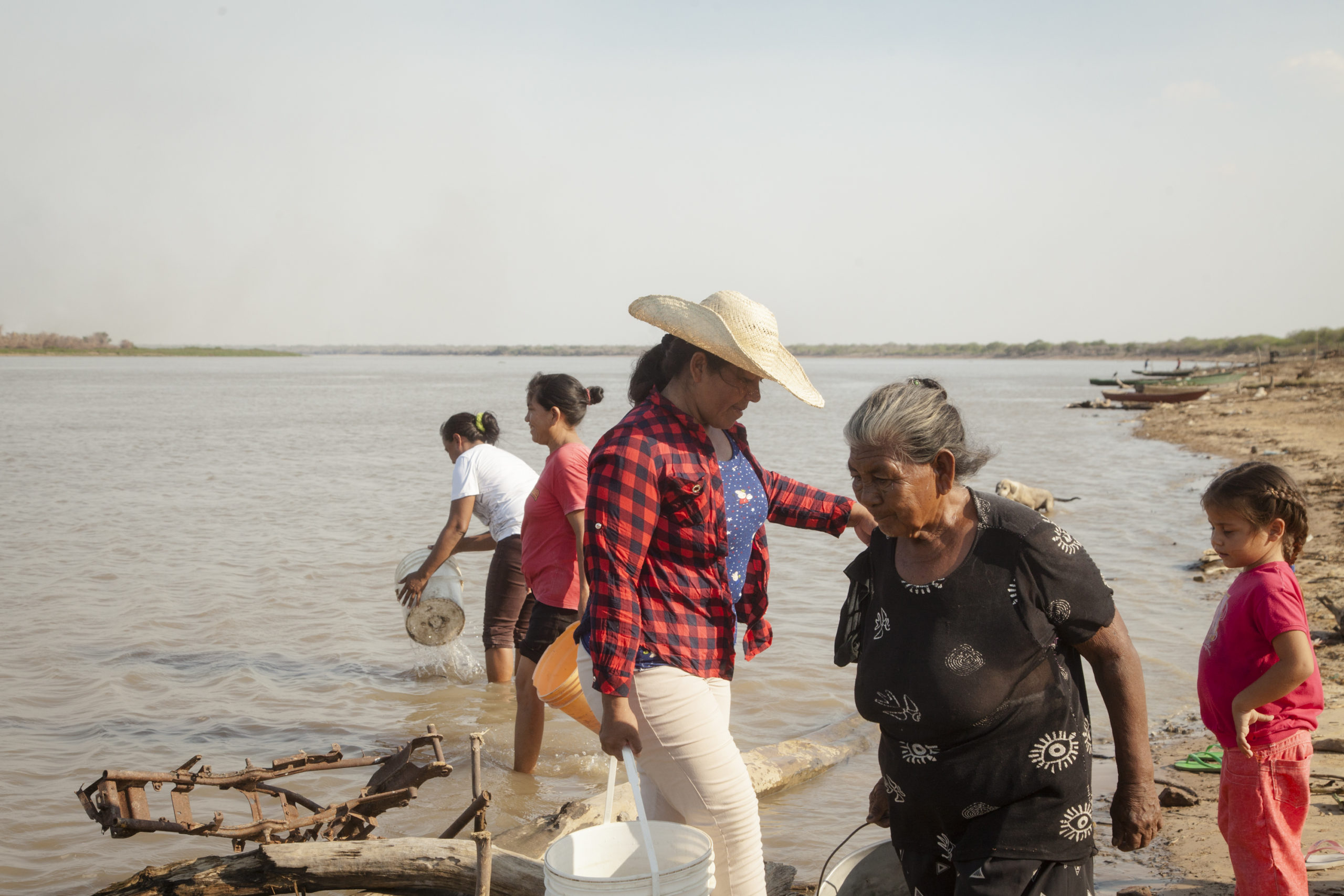
Harsh floods have been followed by droughts that have seen the Paraguay River—source of much of the fishing community’s food—drop to extremely low levels. These phenomena have been linked in part to the high level of deforestation in the region and climate change by the National Committee of The Netherlands. Indigenous people, who depend heavily on waterways and forests for their way of life, are the group with the most vulnerability to these changes.
“There were no fish and the water went down greatly; there was nothing,” said Martínez. “It hurts to be told by a child that they don’t have anything to eat at home”.
“Intermediation”
Indigenous communities in Paraguay have also been placed in a position of vulnerability to the numerous effects of the pandemic by problematic pre-existing relationships to public and private institutions.
Bernarda Pessoa is the leader of the Santa Rosa community of the Qom people in the Paraguayan Chaco’s Presidente Hayes region, which forms part of a constellation of Qom communities in the same area. She says that these communities’ relationship with Fundación Paraguaya, an important Paraguayan NGO, has hindered their resilience to the pandemic.
Pessoa said that the NGO has come to occupy a position of being the communities’ intermediary with the state, following several years of implementing social projects in the area. This relation of dependence has produced splits within the leadership of the closely grouped communities, as certain leaders position themselves as allies of Fundación Paraguaya while others oppose the NGO’s role.
According to Pessoa, the NGO had acted as intermediary for the delivery of emergency supplies from the local government to the communities during the pandemic. But the food was not distributed equally, but in accordance to the political relationships of different leaders.
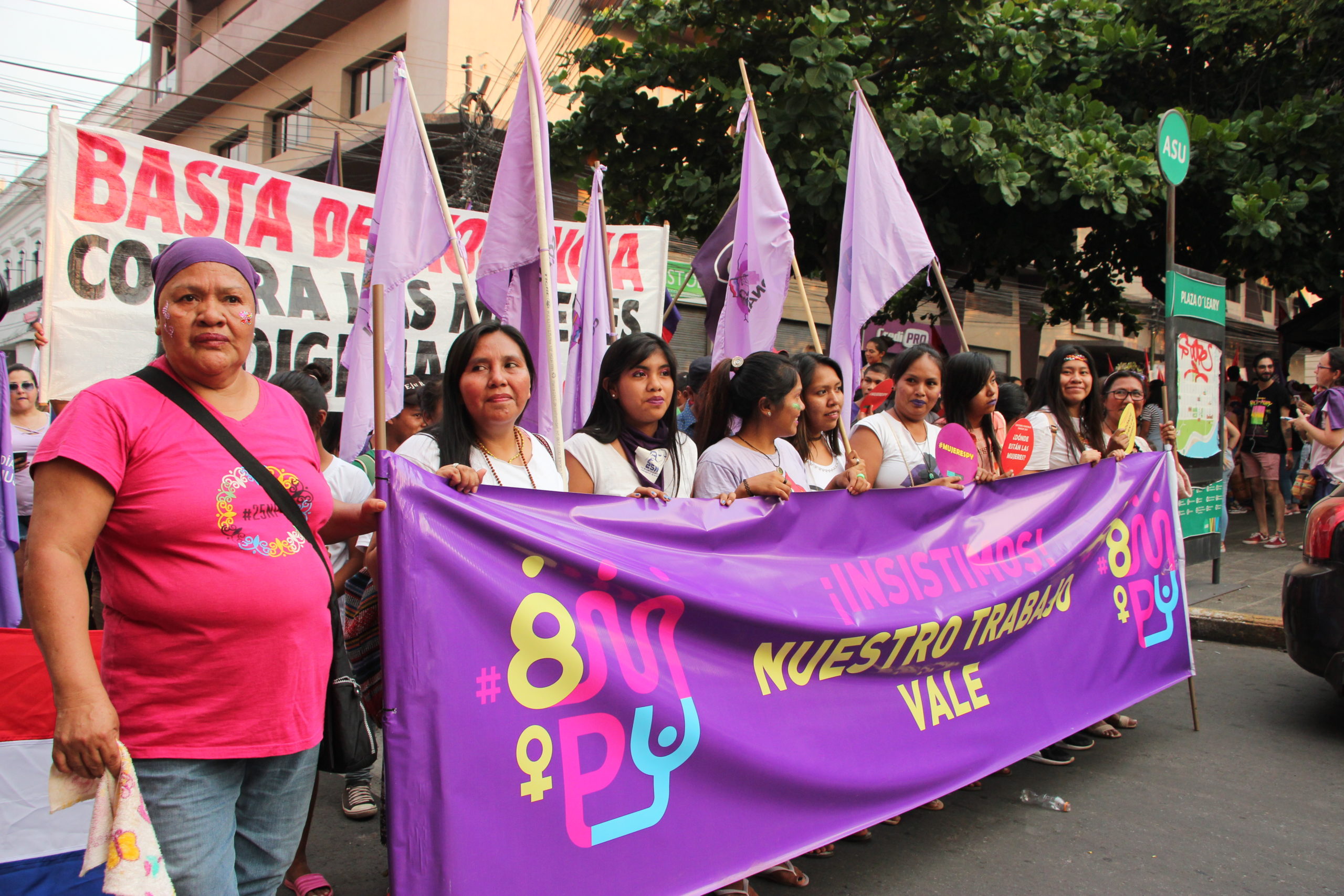
“There are 71 families in Santa Rosa and they only brought us 22 food packs. I gave some out to each family so that it could go around,” she said while sitting below bright banners at the office of the Organization of Rural and Indigenous Women in Asunción, of which she is a key representative and activist. “In the report it said we had been sent 71, but we know that there were only 22.”
In August, this tension with Fundación Paraguaya spilled over into conflict as the NGO began to implement a project involving the creation of a eucalyptus plantation within Qom territory. Pessoa said that the environmental impacts of the project were questionable and that a necessary consultation procedure with all members of the communities was not carried out.
“We aren’t going to allow it and we are going to stop their project because we well know that the community is collective, and the land is collective.”
The Fundación Paraguaya has stated that all communities were informed about the project and that the organization’s methodology will empower families by allowing them to lead projects in their communities.
Following a protest led by Pessoa and other leaders, the project was put on hold pending further discussions between the communities, the NGO and state authorities.
The worst may be still to come
After months of suffering the social, economic and political impacts of the pandemic, the first coronavirus related fatality in a Qom community took place on August 25th when Tito Recalde, a community leader, died of the disease.
As COVID-19 cases and deaths rise across Paraguay, the fragility of the health system has been laid bare. Beds in many hospitals are already full, while the peak of the outbreak is predicted to be still weeks away. Paraguayans have reacted with fierce outrage to the perceived incompetence and corruption of President Mario Abdo Benítez’s government: of the $1.6 billion loan contracted to manage the crisis, it was reported in July that only $4 million had been spent on the health system.
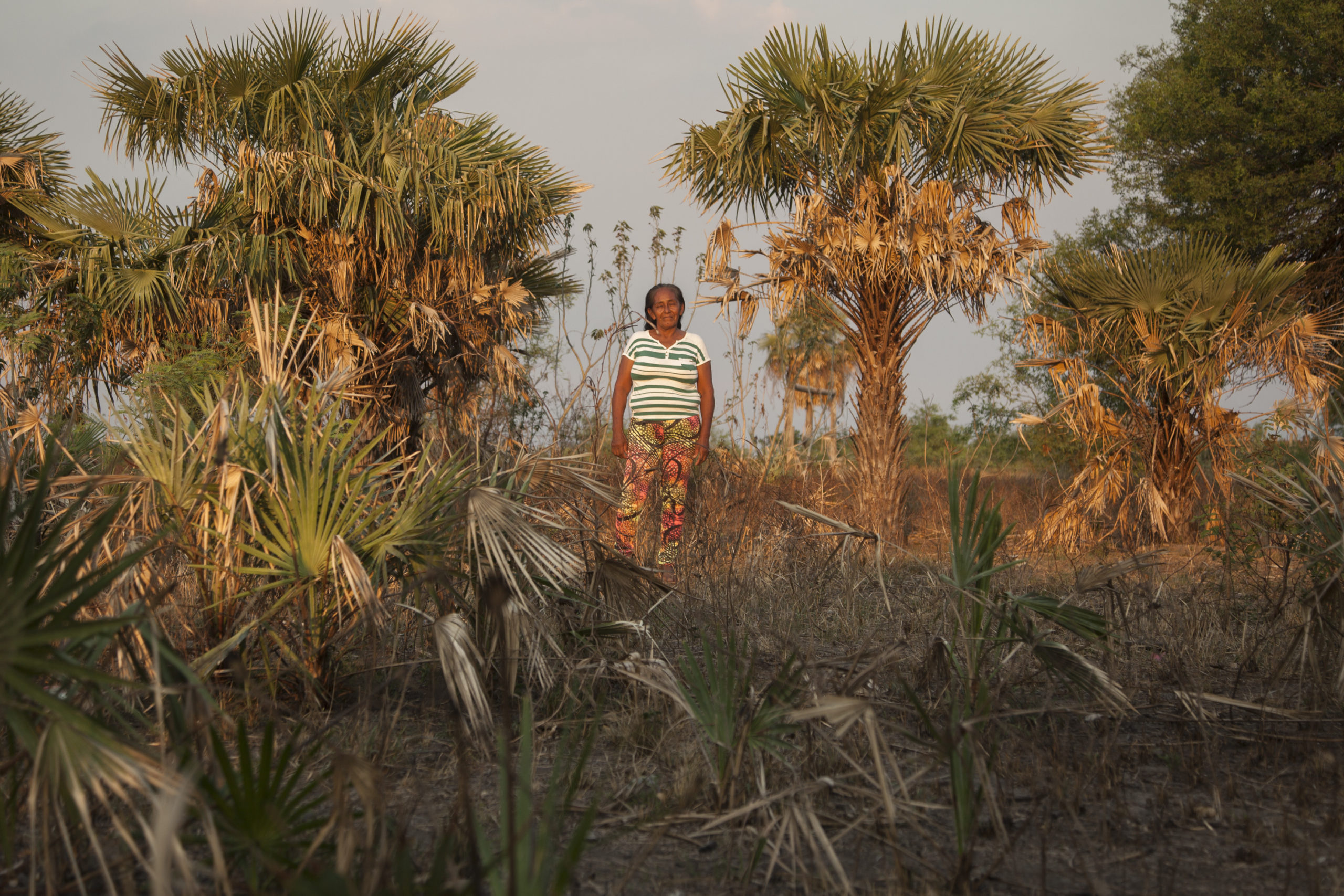
Indigenous communities—which are often poor, remote, lacking health personnel, water, hygiene products and disinfectants—are especially vulnerable as the epidemic curve pushes up.
“This death must highlight the lack of continual, integral healthcare in Indigenous communities,” Tierraviva, an NGO that works with Indigenous peoples in the Chaco, wrote in a press release. “Family health units and community health representatives don’t have sufficient means to provide adequate healthcare.”
Indigenous people clearly have not entered the unprecedented COVID-19 pandemic on equal footing to almost all other sectors in Paraguayan society. The pandemic has served to accentuate historical discrimination that has seen their most basic rights to a have their dignity respected and live free of extreme poverty and deprivation perpetually violated. It is essential that short-term solutions are implemented to deal with immediate pressing needs of communities while also carrying out a serious examination of long-term measures—centred on and driven by Indigenous peoples themselves—needed to rectify this shameful combination of ongoing historical atrocities.
Author Bio:
William Costa is a freelance journalist based in Asunción, Paraguay. He can be found on twitter @will_j_costa
Photographer Bio:
Mayeli Villalba is an Afro-Paraguayan freelance photographer, who works on long-term projects and photo reports. Her main areas of interest are identity, ethnicity, memory and gender, although she feels comfortable working on topics related to Human Rights in general. Her longest and most important visual research is related to the Afro-Paraguayan population, as a form of growing closer to her own identity. She has worked with El País, The Guardian, Amnesty International among others. She is part of the Ruda Colectiva, an organisation of 11 female photographers who each live and work in a Latin American different country. Before working as a photographer, she trained as a social worker at the National University of Asunción.
